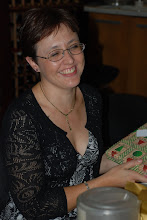With the United Arab Emirates being an Islamic country, I expected to see women dressed from head to foot in black outfits. And, as a modern woman, I expected it to be a very negative thing, undermining women’s rights and their individuality. What I discovered was completely different.
The traditional women’s outfits in the UAE are made up of two primary items. A long black coat worn over clothing, called an abaya, and a head covering, known as a sheyla.
Underneath the abaya women traditionally wear a jabalaya (also known as a kandoura). The jabalaya is often brightly coloured floral or patterned material cut in a kaftan-like style, with decorative embroidery around the neck and cuffs. Many women wear Western-style outfits underneath – but never short skirts or pants, and seldom short sleeves.
The sheyla can be a simple headscarf covering the head. It is also occasionally worn with a veil, leaving just the eyes visible. Some women, though it is rare, will also wear black gloves and black stockings.
There is also the chador, which is the type of covering preferred in places like Iraq, as it is all-enveloping and completely disguises the woman’s shape. In the UAE, the chador is more often worn by older woman, and occasionally worn with a burqua. The burqua is a stiff gold-coloured leather mask. There is a thin strip across the forehead, connected to a strip down the nose. Another piece forms a horizontal strip just below the nose. It looks like it is made of metal. And despite the fact that the burqua covers far less of the face than the veil, it is the only item of clothing that makes me uncomfortable to see.
The abaya and sheyla on the other hand have opened up a whole new world of femininity to me. And this surprised me totally. Every abaya is unique. It is made up of a soft, lightweight black fabric, and if you look closely, the hemline and cuffs are covered with the most delicate of embroidery, beading and other decorative effects.
Often the sheyla is decorated to match. The variations on how the sheyla is wrapped around the head and neck are astounding. There seem to be half a dozen different ways of doing it, from a simple flip over to folding and wrapping.
The delicacy and the variations are absolutely amazing, and give each woman her own unique style. And the way the lightweight fabric moves around the women as they walk is far more feminine that you could imagine. And the hint of the bright colours underneath the abaya as they move is also very evocative.
I have also developed a far greater appreciation for the role perfume can play in defining femininity. I’ve never had much of a nose for scents, and could never really tell if someone was wearing any particular fragrance or not. But over here, the scents seem stronger, richer, earthier, and more sensual and I think it is amazing. There are plenty of traditional perfumeries as well as plenty of Western perfumes. It has made me understand a line from Shakespeare’s Macbeth far better: Lady Macbeth says “All the perfumes of Arabia could not sweeten this little hand.”
The sheyla and the veil also have a way of highlighting a woman’s eyes, and the application of kohl (black eyeliner) only emphasises how much of a role they play in the overall picture.
I have never been a shoe-person. But because often all you see of the designer outfit beneath the abaya is the shoes peeking out from the black, it has given me a new appreciation of their appeal!
Another element that adds to the whole feeling of complete femininity, despite being covered from head to foot in black, are the intricate henna patterns painted on to hands and feet. Henna painting is mostly reserved for special occasions, though in the more rural areas most women will have some kind of decoration on their hands or feet. It is mostly done by hand, though stencils are also often used. It takes a long time to do, and lasts for between 4-6 weeks. I’d love to try this out.
I still haven’t learnt the significance of who wears what style of outfit, but I have learnt that there is no way that the clothing makes the women anonymous. It is highly individual, chic and very extremely feminine!
Subscribe to:
Post Comments (Atom)

No comments:
Post a Comment